




There is something truly electric about walking into a room filled with Olympians and Paralympians. The energy is unmistakable—not because of medals earned, but because of the shared understanding that lives in that space. We have all felt the weight of representing our country, the surge of crossing finish lines, the agony of defeat, and the quiet moments of doubt that make victory so much sweeter.
Leading USOPA has given me the privilege of witnessing the extraordinary ways you give back—whether teaching resilience, building programs, or investing in future athletes. Put two Olympians or Paralympians together, and within minutes they are sharing stories, offering connections, and finding opportunities to collaborate. We each carry stories that can inspire resilience in others—the capacity to recover from setbacks, the comeback that once seemed impossible, the teammate who lifted us when we doubted ourselves, or the privilege of representing our country on the world stage. When shared, these stories become blueprints for others facing their own uphill battles.
You didn’t become an Olympian or Paralympian by accident. You got there through dedication- something bigger than yourself. That same spirit drives everything you do now, and it is precisely what makes USOPA so much more than an alumni association. We’re a force for good, powered by people who understand that true victory comes from lifting others up. Our platform and experience as Olympians and Paralympians are both a gift and a responsibility. When we mentor, serve, and lead, we honor those who supported us and those who cheered us on, while ensuring the values of excellence, friendship, and respect.
As we move forward, let us remember that our shared purpose is greater than any individual achievement. Together, we carry the responsibility of ensuring that the values of excellence, friendship, and respect remain alive in every community we touch. USOPA will continue to serve as the bridge between current and future Olympians and Paralympians—honoring our legacy, empowering today’s athletes, and inspiring the generations to come. The Games may have been the pinnacle of your competitive career, but they were never the end of your story. Every day is an opportunity to compete again—this time for your community, for the next generation, and for the values that brought us all together. One of the most powerful qualities of our community is how naturally we support each other.
In this reflection, I have to mention the role of the Assembly. The U.S. Olympic & Paralympic Assembly, held this September in Salt Lake City, played a vital role in strengthening our movement. It provided a forum where athletes, alumni, and stakeholders came together to share perspectives, discuss challenges, and build collective solutions. The Assembly affirms that our work is about unity, shared responsibility, and the pursuit of excellence that extends far beyond competition. USOPA is proud to bring the voices and experiences of alumni into this dialogue, ensuring that the legacy of Olympians and Paralympians continues to shape the future of sport.
Thank you for continuing to represent excellence in everything you do. Thank you for understanding that our shared bond comes with purpose. And thank you for proving, again, again and again, that the Olympic and Paralympic spirit creates champions not just in sport, but in life.
With respect and gratitude,

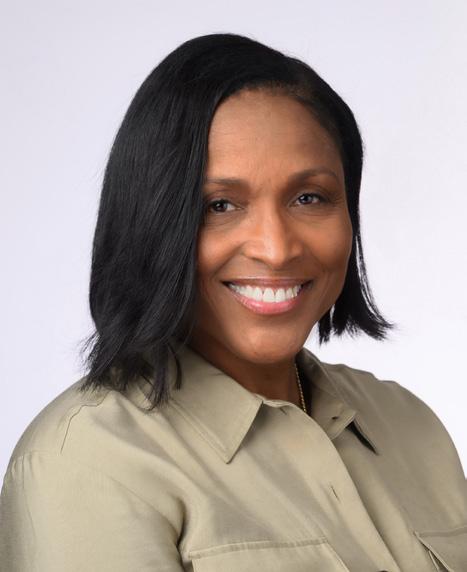

When I started in this role in March, I didn’t have many preconceived notions of what it would be: I saw tons of opportunity, and the excellent example of inclusivity and care that had been set for decades. In the interview process, I felt myself wake up; my drive refocused in a way it hadn’t maybe ever. The opportunity to be creative in programming to simply support my peers and tell their stories? My brain exploded in the best way, and it has been rearranging itself ever since.
I’ll admit to you, my peers, since I know we’re all hard on ourselves: In my opinion, it’s taking me way too long to get my own ducks in their rows. But two big reasons I’ve been able to rearrange all of my excited thoughts into cohesive plans? Robbie Fulton II (4-months-in Alumni Relations Manager who you met in July’s Magazine) and Christine Taylor (long-time USOPA Coordinator and source of institutional knowledge). And I just wanted to take a minute to celebrate this milestone in department history: We’ve never had a full team of 3 to serve you before!
I will always be grateful for the three months that Christine and I were a team of 2: She loves her job, delights in the little things that make relationships go, and makes me better with her timeliness and clear communication.
In every room I’ve gotten to be in with her, at the office, on campus at the CSOPTC, or at the warehouse going through pallets, watching coworkers celebrate her presence is so fun to behold. She’ll get a job done and create a bridge or reinforce the one she’d already built there along the way. Her genuine, supportive navigation of the alumni and organizational space inspires me.
Robbie sometimes talks about mentors in his past and present, and how lucky he feels to be in certain scenarios. And I just smile and think, “We’re so lucky to have you.” His authentic intentionality in any conversation tells me he’s constantly recalibrating, always considering humans first, and getting ready to work tirelessly for the athletes whose whole-human stories he cares so much about. And then he does just that (work tirelessly). The way he’s going to help modernize what we offer all of you gets me so excited, in all ways. Robbie’s energy, work ethic, and creativity abound, and the way he applies them to the things that really matter drives me to stay focused on the big picture, too.
I, Kara, have absolutely loved connecting one on one with so many USOPA members in a short time. Whether it’s members of leadership on the USOPA Executive Committee or Presidents of Chapters, high performance directors or alumni coordinators I get to work crossorganizationally with who happen to also be USOPA

Members, or one of you who is gracious enough to email me back just so we can chat, all of your stories drive me forward, and encourage me that we can build something sustainable and amazing, together, to celebrate you. And that’s the thing about this team that we’ve assembled: Robbie, Christine, and I get giddy about those possibilities. We’ve all had our moments with each other on calls when we’re beyond inspired by or fired up from or in awe of the tremendous impact of one of your lives. Our purpose is shared: You.
This is the A Team. We’re working hard on projects we think you’ll love and are constantly thinking about how best to serve you. The fastest way for us to find that out is for you to tell us! Shoot any of us an email by clicking on our names below.
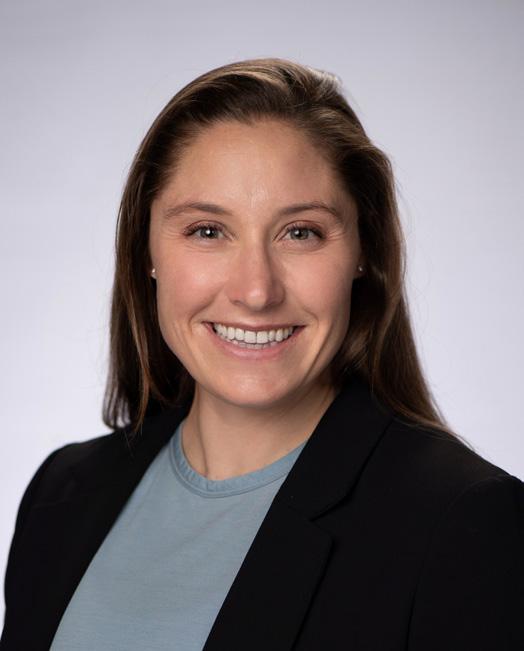

Kara Winger
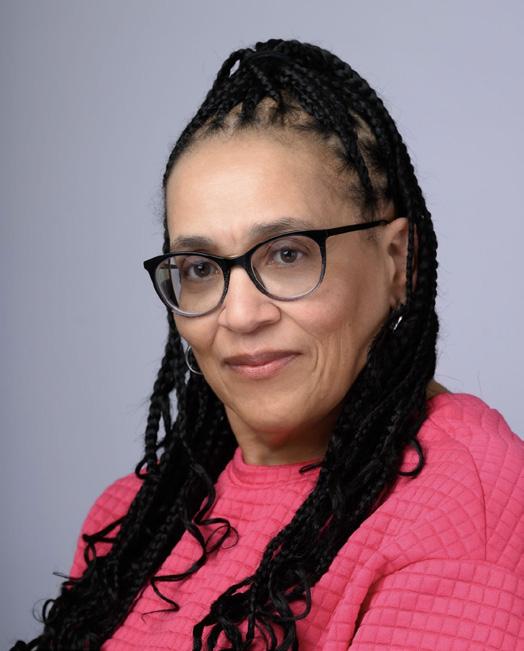


Christine Taylor

Robbie Fulton


After the flurry of activity for Olympic and Paralympic Day in June, the third quarter of this year was a quiet one on the activities front for Chapters. The Southern California Chapter of USOPA did attend an LA Galaxy game in July! Reportedly, an awesome time was had by all, as you can see in the photos.
Are you involved in a Chapter? If not, would you like to be? Please get ahold of us in alumni relations so that we can get you plugged in. We’ve had interest in new chapters forming recently!
Exciting things are happening internally at the USOPC to get USOPA members and affiliated organizations connected for local events in your communities. While we are a bigger team than we’ve ever been, the true power of USOPA is your connection to each other and the humans around you in the towns in which you live! We’re exploring ways to scale connecting you to each other, and there are some exciting things on the digital horizon in that area. If you want to build events for your community (USOPA and local), go for it! More funding than ever is available to USOPA Chapters for Movements-furthering activities at the local level (think: Inspiring the next generation, spreading the values of Olympism and Paralympism, and just generally being the awesome people you are, out loud in the places you live). Furthermore, we’ve expanded the definition of what a Chapter is to encompass short-term groups of USOPA members (reunion groups planning things on their own, like sport-specific and year-specific activities), and digitally-connected cohorts! We can support the event you’re planning for the future Knitting Club of USOPA or the hypothetical 1988 Figure Skating reunion in a few summers with swag, logos for use in compliance with licensing rules, communication, and more. Just let us know what you need, and we’ll foster that peer-to-peer connection that drives all of us.







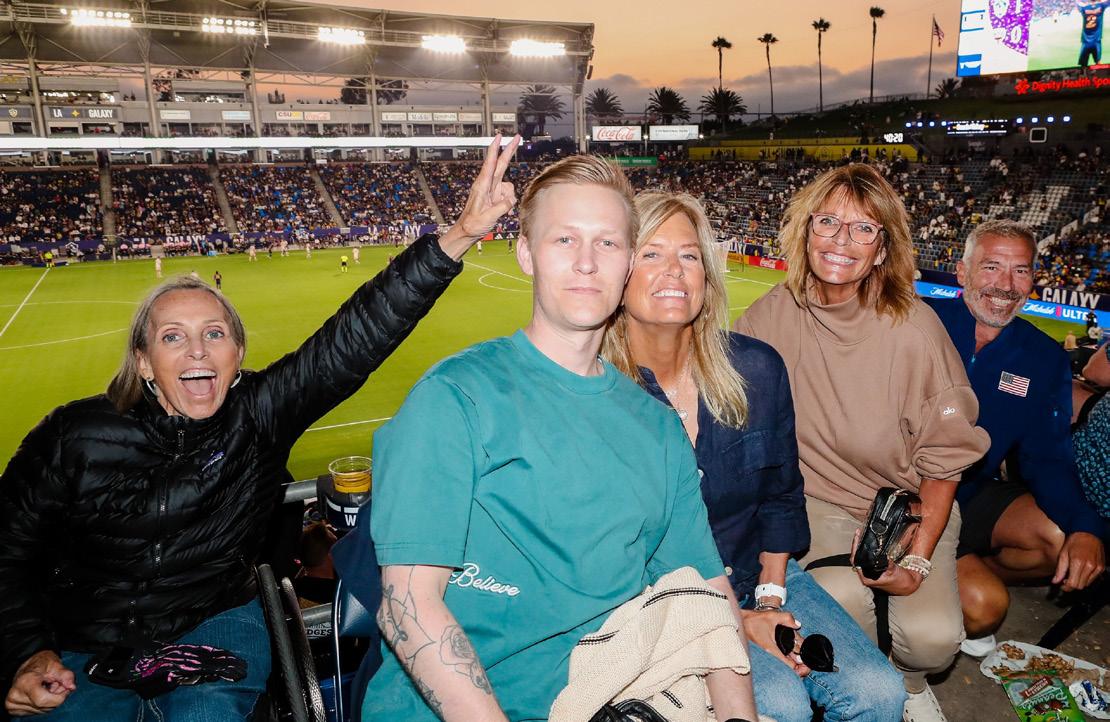

Welcome to The Podium, a quarterly spotlight of life updates, career or personal milestones, and more from USOPA members across the country. This is an opportunity to stay connected with fellow alumni who choose to take the podium and give us an inside look into their lives!
Para Track and Field | 2020, ‘24
A two-time Paralympian who won dual gold medals in the high jump and the 100-meter dash at the Paris 2024 Games. A student at USC majoring in cinematic arts, he also co-founded Angel City Sports and has been a strong advocate for disability and adaptive athletics since childhood. The docuseries follows his journey from the Tokyo 2020 Paralympics to Paris 2024, while also highlighting his role as an executive producer of the project. At a special screening of the series, Ezra reflected on his mindset in competition, stressing that adaptive athletes must be recognized first and foremost as elite competitors.
Wheelchair Basketball | 2020, ‘24
Courtney Ryan, a key member of Team USA’s wheelchair basketball squad. Her journey from Tokyo 2020 to capturing silver in Paris 2024 reflects not only her athletic growth but also her commitment to challenging stereotypes about adaptive athletes. In the series, she emphasizes the constant need to combat misconceptions, explaining that people often overlook the elite level of competition in adaptive sports. Alongside her training and competition, Ryan’s story highlights her advocacy for disability equity and underscores that athletes like her compete with the same intensity and skill as any other professionals on the world stage.
Para Swimming | 2020, ‘24
Jamal Hill is a two-time Paralympic swimmer. Raised in Inglewood, he competed at the collegiate level in Division III and only came to fully understand and name his impairment while training for the Olympics in his midtwenties. Hill shares his emotional journey of identity and acceptance. Beyond his accomplishments in the pool, the series emphasizes his mission to teach one million people to swim and his belief that love, and community carry as much value as medals.
Wheelchair Basketball | 2020, ‘24
Josie Aslakson, another standout on the U.S. women’s wheelchair basketball team, went from winning bronze in Tokyo 2020 to silver in Paris 2024. After a car accident at age three, she found that basketball was both an outlet and a community, though she recalls initially feeling isolated because “there was no one like me.” In the docuseries she explains how sport helped her develop identity and belonging, while also exploring her other passions, including mindfulness practices and art. Her narrative gives emotional depth to the series, showing how adaptive sports offer not just competition, but also healing, connection, and a platform for self-expression.


Sailing | 2020, ‘24
Lara Dallman-Weiss, a two-time U.S. Olympian in sailing, is now channeling her competitive mindset into leadership development. She draws on her experience as a high-performance athlete to help leaders perform under pressure. Her coaching emphasizes resilience, strategic thinking, and mental toughness beyond the water. Through training programs, she empowers professionals to lead with clarity, confidence, and poise.
Read Here: Article via US Sailing

Taekwondo | 2004
Nia Abdallah has released part one of a three-part autobiography, sharing her journey to the Olympics. It’s an inspiring story of an underdog who defied the odds and made history. Part one is now available, giving readers a chance to join her on this journey. The official
launch took place on September 14, 2025, which is Nia Abdallah Day in the city of Houston.
Order Your Copy: The Nia Abdallah Olympic Story

Swimming | 1984, ‘92
At 63, Paralympic swimming champion John Morgan continues to compete at the World Aquatics Masters Championships, his competitive spirit is undiminished after decades in the sport. Morgan has won 13 gold medals and set 14 world records, cementing his place in history. Despite losing his eyesight as a teenager, he went on to conquer extraordinary challenges, from open-water marathons to mountain climbs. His story is a powerful reminder that resilience and passion can defy every obstacle.
Read More: Article

Para Track and Field | 2016
Since retiring from the Paralympics in 2019, Ayden Jent has stayed active in his community through volunteer work with organizations like the Joseph Maley Foundation, Athletes for Hope, and DreamWakers. In 2021, Jent worked as a Track and Field researcher for NBC Sports during the Tokyo Paralympic Games, cheering proudly as many of his teammates earned their first medals. Jent now teach World History and Political Science at Herron High School in Indianapolis, where he also coaches sprints for the Track and Field team. He also coaches’ youth running programs at the local YMCA and loves traveling to bring global perspectives into his classrooms. Jent’s goal is always to inspire students to grow into well-rounded, positive, and resilient individuals.
Jent’s Team USA Profile: Here

Sled Hockey | 2014, ’18, ‘22
Three-time Paralympic gold medalist and former U.S. National Sled Team standout Rico Roman has been named a Team USA Community Champion by the U.S. Olympic & Paralympic Foundation in recognition of his impactful nonprofit work. As a volunteer with Bridge City Inclusive Sports in Portland, Oregon, he supports adaptive sport opportunities for disabled youth showcasing his dedication both on and off the ice. Throughout his career, Roman competed in five World Para Ice Hockey Championships, earning three gold and two silver medals, and is also a Purple Heart recipient from his service in the U.S. Army. He expressed deep gratitude for the recognition, emphasizing how it amplifies the impact for adaptive athletes in his hometown and beyond
Read More: Article via USA Hockey

Freestyle Skiing – Moguls | 1992
I’m proud to be part of the USOPA family and grateful for the support I’ve received along the way. For the past 30 years, I’ve called Steamboat Springs home, where my wife an NCAA cross-country skier born and raised here and we are raising our son, Enzo. After retiring from competition, I spent years coaching with the Steamboat Springs Winter Sports Club and the Canadian National Team through two Olympic Games, and I now apply those experiences to my work in real estate with Steamboat Sotheby’s, guided by my motto, “Everything Matters.” I continue to consult with athletes, including Olympian Olivia Giaccio, and remain passionate about coaching, which earned me Colorado’s Junior Coach of the Year award. Above all, I’m grateful for the amazing community we’ve built here in Steamboat Springs.

Two-time Olympian and 12-time National Champion Ajee’ Wilson (bib number 6) en route to record-setting 1:58.76 win in the Joetta Clark Diggs women’s 800-meter race at the Elliott Denman/New Jersey International Meet on June 22 at Monmouth University.
50km Race Walk | 1956
The annual Elliott Denman New Jersey International Track and Field Meet was a major success, with an array of records set and top marks achieved, on June 22, 2025, at the Joe Compagni Track at Monmouth University in West Long Branch, NJ. Two-time Olympian Ajee’ Wilson and four-time Olympian Joetta Clark Diggs (both in the 800 meters) were top performers in the meet. Wilson won the women’s 800 in 1:58.76, her fastest time in three years and fastest ever in New Jersey history. Once again, many events in the meet were named for other Olympians, many from New Jersey and the Metropolitan NY area, and celebrated their legacies. Among these events were the Frank Budd 100, Andy Stanfield 200, Larry James 400, Rich Kenah 800, Eamonn Coghlan mile, Elliott Denman one-mile racewalk, Horace Ashenfelter steeplechase, Renaldo Nehemiah 110 hurdles, Norman Tate triple jump, on the men’s side, and the Aliann Pompey 400, Joetta Clark Diggs 800 and Barbara Friedrich javelin, on the women’s side. The next Elliott Denman New Jersey International Meet will be held in June 2026.
More Information: Here

Rory Cooper, PLY
Para Track and Field | 1988
John Register, PLY
Para Swimming / Para Track and Field | 1996, ‘00
Kara Winger, OLY
Track and Field | 2008, ’12, ’16, ‘20
Ellie Marks, PLY
Para Swimming | 2016, ’20, ‘24

USOPA Executive Committee member Rory Cooper, PLY, was joined by fellow USOPA members (pictured) John Register, Kara Winger, Ellie Marks, and fellow veterans in showing their encouragement for athletes at the DoD Warrior Games this past July. Together, they supported the camaraderie, resilience, and the role of sport in recovery, while celebrating the achievements of service members and veterans who continue to inspire through their determination and competitive spirit.



Step up to The Podium and share your life updates, career milestones, and more with our USOPA community. Submissions will be featured on the Team USA alumni website and in the USOPA quarterly magazine.
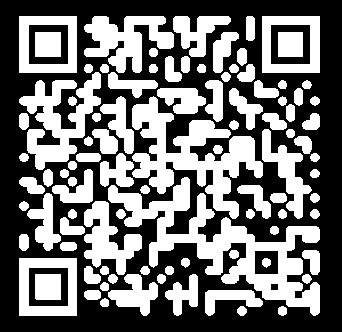
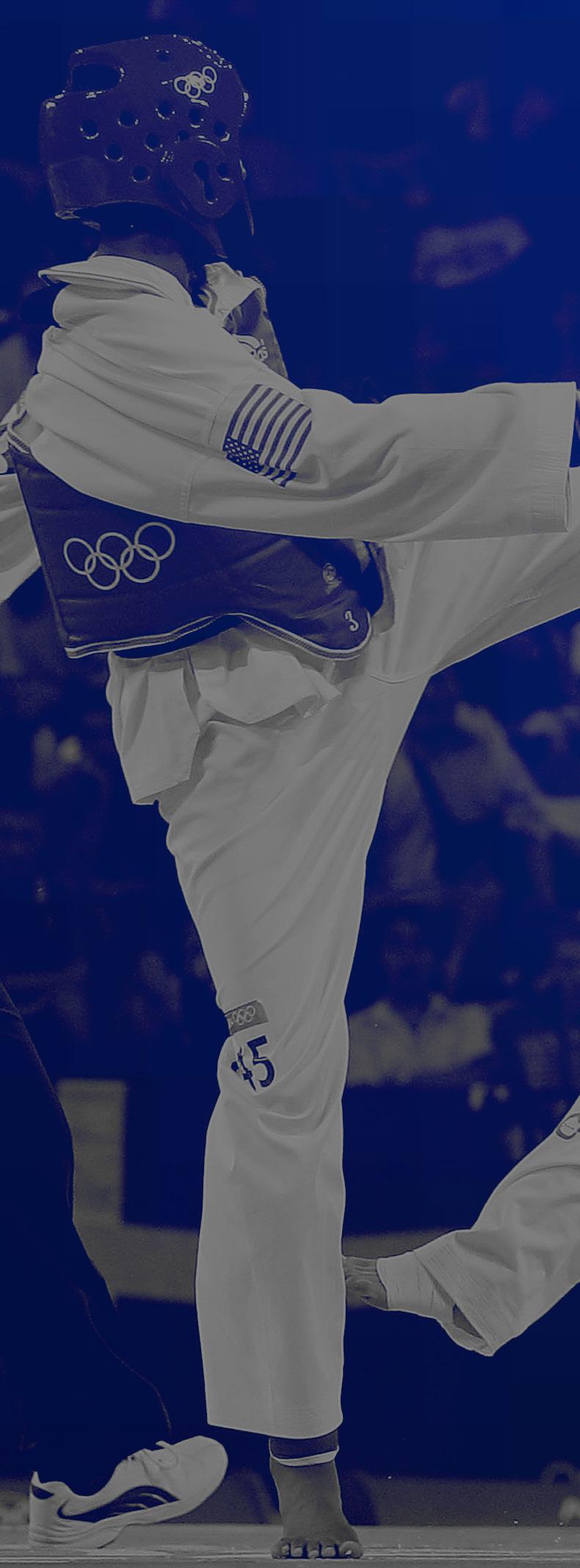


Update your contact information and stay in the know of all things USOPA. We want to connect you to active Chapter leadership across the country! Help us help you network with your Olympic and Paralympic peers!

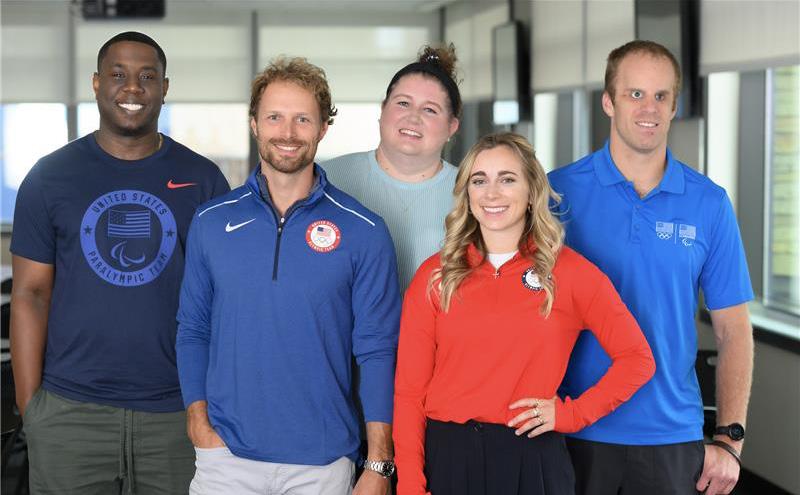
The USOPC Athlete Fellowship is a donor-funded program created for retired Team USA athletes. This fellowship provides a unique opportunity for athletes to launch their post-competition career journeys by joining the Team Behind the Team. Over the course of a year, fellows take part in a transformative experience within the heart of a global, purpose-driven, multi-sport organization.
The fellowship employs a structured matching process to place each fellow in an environment suited to their skills and interests across two six-month rotations. Fellows begin by meeting with representatives from a range of departments to gain insight into the work and potential projects within each area. They then submit their top three preferences, and placements are determined based on both their interests and where they are best positioned to contribute and develop. After six months in their initial department, fellows transition to a new one, repeating the matching process for their second rotation. In addition to their primary placements, fellows engage in cross-departmental projects, providing opportunities to collaborate broadly across the organization. This structure ensures that each fellow gains substantive and diverse experience during their year in the program.
The USOPC welcomed our latest cohort of Fellows in early July, and they are already bringing their leadership, teamwork, and athlete mindset to departments across
the organization, and their impact is being felt in meaningful ways.
Carly Margulies shared her perspective on stepping into this next chapter:
“As a retired Olympic athlete, stepping into the ‘Team Behind the Team’ has been surreal in the best way. I’m learning a ton, gaining hands-on experience, and starting to see how my skills on the mountain translate into this next chapter off of it. I’m beyond excited and so grateful that my time on Team USA opened the door to this oncein-a-lifetime opportunity. Saying yes to this was a nobrainer. I can’t wait to see how my competitive-sport skills transfer into the workforce—and to find out where my passions take me next. Grateful for the opportunity— and ready to see where this year leads!”
Carly Margulies, a 2022 Olympian in halfpipe skiing, has joined the USOPC as an Athlete Fellow in the Events department. With a background in psychology, coaching, social media marketing, and the service industry, Carly brings a diverse skill set and a unique athletic perspective to her work planning and supporting impactful events.
Fun fact: The Beijing Olympics were Carly’s first competition back after two years recovering from knee surgery—she hadn’t competed in any Olympic qualifiers yet still earned her spot on Team USA.
Heather Erickson is a five-time Paralympian in Sitting Volleyball and a three-time gold medalist, two-time silver
medalist, and two-time Paralympic MVP. She joined the National Team at just 13 years old and made her Paralympic debut at the 2008 Beijing Games at age 15. Now an Athlete Fellow with the USOPC’s Athlete Services and NGB Services department, Heather is passionate about building athlete-centered environments and growing sport from the grassroots to the professional level.
Fun fact: Outside of sports, Heather dreams of owning a sprinter van and traveling the world with her dog.
Kyle Coon is a two-time Paralympian in Para Triathlon (2020, 2024) and recently joined the USOPC as an Athlete Fellow in the External Affairs department, working with the Legacy Team. He trained full-time at the Colorado Springs Olympic & Paralympic Training Center from 2019 to 2024 and holds a degree in Interpersonal and Organizational Communication from the University of Central Florida. Kyle has worked across the nonprofit sector, federal government, and the beef industry, and is the author of Discovering A Life Without Limits: How cancer took my sight, blindness gave me vision, and the mountains let me live.
Fun fact: He’s a proud member of Hufflepuff House and wears mismatched socks on purpose.
Logan Cunningham is a 2016 Olympian and American track and field athlete who specialized in the pole vault, with a personal best of 5.81 meters (19 feet). He holds a Bachelor of Science in Nutrition and Foods and a Master of Business Administration. With a background in project management, Logan has now joined the USOPC’s
Athlete Advancement team as an Athlete Fellow, where he supports athletes in their personal and professional development.
Fun fact: Logan is a rated helicopter pilot and gets his adrenaline fix by navigating the Colorado skyline.
Wesley Williams is a four-time Paralympian who guided athletes to four Paralympic silver medals and three World Para Athletics Championship gold medals, while also winning a silver medal himself. While training at the OPTC in Chula Vista, he worked as an onsite athlete liaison supporting both Paralympic and Olympic athletes, as well as in transportation. Now an Athlete Fellow with the USOPC’s UCC department, Wesley is excited to connect with staff and athletes across the organization as his journey comes full circle.
Fun fact: Wesley is a proud citizen of The Raider Nation.
By Bailey Flanegin, USOPC Athlete Fellowship Program Specialist


Readiness for Board Service is a four-day virtual program held once a year for Team USA athletes. The August 2025 session marked the program’s third year giving athletes a new arena to apply leadership, communication, and teamwork skills. These qualities acquired from sport can translate directly into board service, where strategy, collaboration, and resilience are critical. Across the Olympic and Paralympic movement, athletes are not only encouraged to pursue board service, but their representation is also required. National Governing Body (NGB) boards must include 1/3 athletes. Through various election pathways at the NGB and USOPC levels across the Movements, athletes regularly serve as board representatives, helping shape policies, ensure accountability, and carry forward the values of spirit into organizational leadership.
While athletes bring experience, credibility, and determination, many look for support in building the technical and tactical skills that make board service most effective. That’s where the Readiness for Board Service program comes in. A collaboration between Dartmouth’s Tuck School of Business and the USOPC, the program equips current and future board members with the knowledge and preparation to contribute meaningfully.
Participants learn how boards operate, how decisions are made, and—most importantly—how to use their voice to advocate for athletes, organizations, and communities. The program hones skills athletes already possess.
Two USOPA Executive Committee members attended the most recent iteration:
“I participated in 2019’s Tuck Next Step program, so this Readiness for Board Service experience was a great addition in several ways.”
Sharon Jewell, OLY (Taekwondo 1988)
“This program stood out for its applicability and relevance to high-stakes governance. The faculty’s strategic frameworks,the peer learning environment, and the intentional focus on translating ambition into boardroom effectiveness have enriched my readiness to serve at the organizational level.”
Bill Schuffenhauer, OLY (Bobsled 2002, ‘06, ‘10)
A key strength of the program is balancing athletes’ existing knowledge with new learning. Years of training have made them skilled goal setters and team players. Now, the curriculum emphasizes three core pillars of board readiness:
1. Communication: Athletes learn to share experiences effectively by listening actively, asking insightful questions, and articulating ideas clearly. Sessions aim to ensure communication that is confident, professional and authentic.
2. Finance: Understanding budgets, financial reports, and fiduciary duties is made simple. Athletes gain practical skills to analyze an organization’s financial health.
3. Leadership: Beyond sports inspiration, athletes learn organizational stewardship through case studies and exercises. They develop skills to guide vision, uphold ethics, and build consensus for meaningful impact.
As more athletes assume governance roles, their influence is transforming the future of sport and beyond. Programs like Readiness for Board Service make sure this transition is deliberate, supported, and successful. Whether it’s a retired Olympian serving as an athlete representative or a Paralympian shaping national sport policy on their NGB board, athletes are demonstrating that leadership doesn’t end after retirement — it evolves. By equipping athletes with skills in communication, finance, and leadership, Readiness for Board Service is fostering a new wave of board members who are as strategic in the boardroom as they once were in sport.
By Cody Newton, USOPC Athlete Transition Specialist

Kara sat down with Summer (Sanders) Schlopy, OLY (Swimming 1992) to dive deeper into her feature from last quarter’s magazine on what being a Foundation ambassador has meant to her, how she got to this point, and what she sees as big momentum for athletes and alumni alike in the work the USOPF is doing in the future.
K: Tell me about your journey post-retirement. How long did it take you to come back to USOPC appearances and such? Your article last month mentioned that you did so “several years ago,” what was the impetus?
S: I’ve always been involved with the Rings. I’ve long shown up at events and gladly worn my Olympic stuff! I’m just forever a fan. I’ve loved other philanthropy work I did for decades, but there’s something about the Olympic and Paralympic Movement: I won’t ever get burnt out on wanting people to be closer to it. I’ve only found layers of being passionate about this work. I know I can be a healthy link between the current Foundation, the USOPC, and our amazing alumni. I want to make people feel more seen and more a part of that family.
K: Can you share a success story you’ve seen firsthand as Foundation ambassador that speaks to the impact donations have on current athletes?
S: The Paralympic side of the Movement has made a huge impact on me: In many cases, the reason why Paralympians podium or their team does so much better than years past is in part because their equipment is some of the best that they could have, whether it’s their chair or prosthetics. We have the most incredible athletes in the world on the U.S. Paralympic Team, and now, thanks to donor help in many cases, the equipment they’re outfitted with just lets that athletic ability shine: It can make the difference between not making a final and making a podium. I never understood before being in this role how limiting it can be when you don’t have paralympic equipment to compete against the rest of the world. Learning a lot about our Paralympians has been amazing for me.
The education piece is also vital: Guild is an incredible program that so many people are taking advantage of. This partnership means so much to me. When I was done swimming, I took what I thought would be a short break from school as I adjusted to life beyond sports, and then I couldn’t get my credits to transfer, online classes weren’t an option yet, and even though I was only 7 units shy of my degree, I didn’t have the right options to fit my life and finish it. I finally graduated in 2017.

It makes me feel so good that athletes are understanding Guild’s value: We found something that we are so intensely passionate about as athletes. While you are living in your passion point right now, you also have an incredible opportunity to push for your next phase. Dip your toe in, do something scary!
K: What are the mechanics of your ambassadorship? Do you tell athlete stories to donors directly, participate in development conversations?
S: I take it upon myself to reach out to my local donor representatives and be a sounding board for USOPF stuff, for the way they’re relating to the donors that they serve.
I love to collect stories from the athletes so that they can shine brighter in our events. I engage with the donors by telling real life stories. One of my recent favorites: Bonnie Blair was sponsored by her local police department, and through all four of her Olympic Games they supported her from her hometown.
When I’m called upon to do an event, it’s to represent the athlete at every level in a way that the donor sees their need and their connection to the athlete journey,
and then they’re joining in the celebration as part of that team when the athletes reach the podium.
K: What’s the best way to tell you more stories?
S: I want the raw and real! Did you have any local support, or heartfelt stories about the people who supported to you? Get vulnerable, tell the real story.
Many people can’t relate to winning a superbowl, making the NFL, being on the Olympic team, or winning a medal, but they can relate to hours in the pool and smelling like chlorine! None of us can hide from the hardest parts of any journey. I want to hear about that.
From there, you can talk about the fact that our Olympic Team is not funded by the federal government, etc., and I can translate for a donor the impact that their gift will have on an athlete through the lens of all of our stories.
The beauty of fundraising in the U.S. Olympic and Paralympic Movement is that there’s one organization to go to, the USOPF. Your stories make a huge difference for this generation of athletes in this one place where it’s possible to. We are the one and only Team USA.
Want to tell Summer your story? Let Kara know and she’ll put you in touch.


Join the U.S. Olympic & Paralympic Museum’s Legacy Library, a free virtual book club connecting sports fans, book lovers, and Museum supporters. Each quarter, we feature a book by an Olympian or Paralympian, followed by a live Zoom discussion where participants explore the athlete’s journey, challenges, and triumphs. To view past sessions and register for new ones, visit usopm.org/bookclub/.
If you are interested in having your book featured, please contact communications@usopm.org.
Discover the stories behind the Games! Join the U.S. Olympic & Paralympic Museum for Games History Hour, a free virtual series exploring the rich history of the Olympic and Paralympic Movement with experts from the International Society of Olympic Historians. Learn more at usopm.org/gameshistoryhour/.
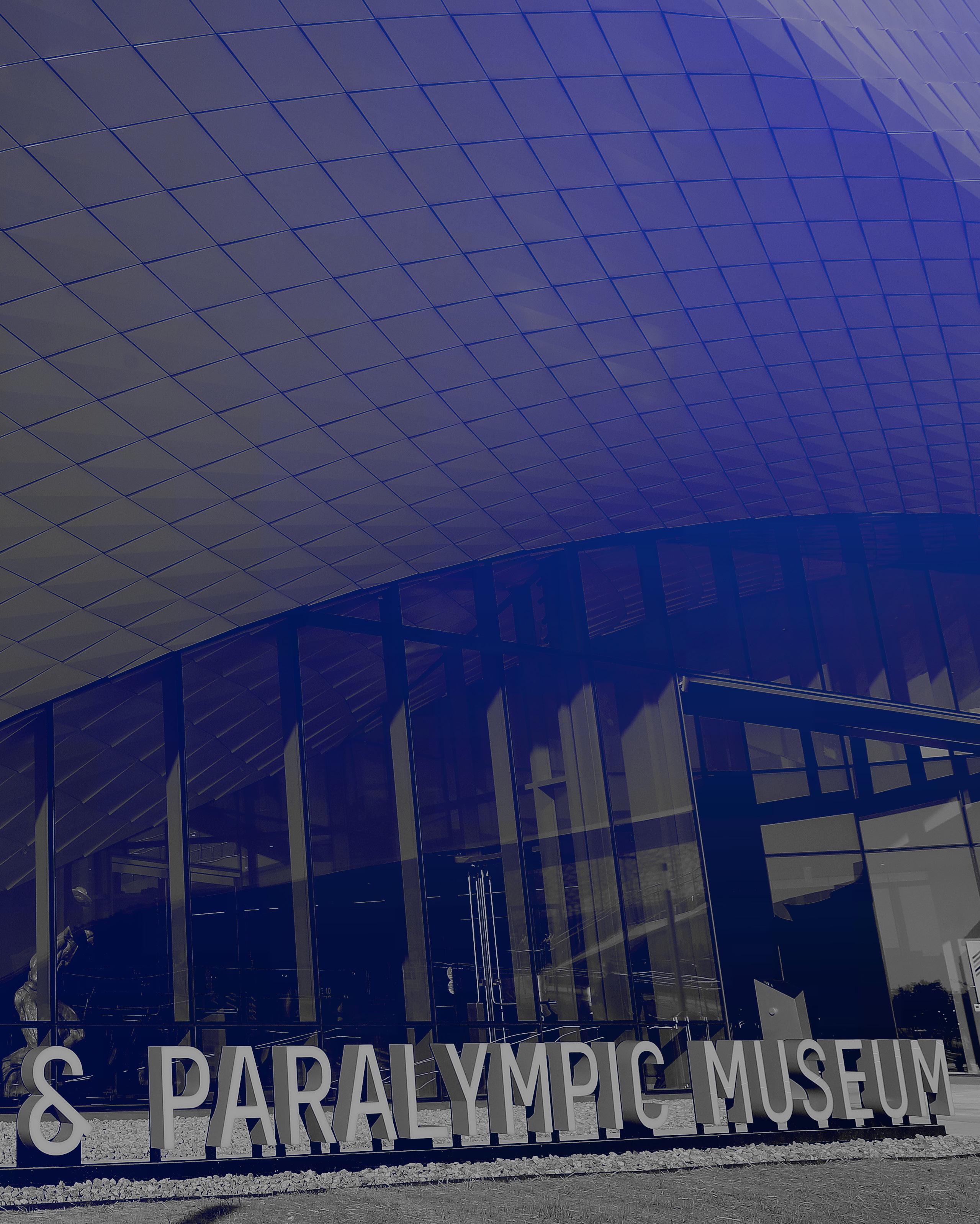
As Olympic and Paralympic alumni, you are the reason this Museum exists—a living tribute to the legacy you’ve created through dedication, perseverance, and excellence.
Your stories are the heartbeat of the Museum. Every exhibit, every artifact, and every visitor’s experience reflects the values you embody and the inspiration you continue to provide. You are the foundation of this extraordinary place, and it’s your legacy that makes the Museum vibrant, meaningful, and timeless.
Thank you for being the driving force behind it all. It’s our honor to celebrate your achievements and share your stories with the world.
As Olympic and Paralympic alumni, you receive complimentary admission! Explore the incredible legacy of Team USA through guided tours, live artifact demonstrations, and engaging events designed to bring history to life. Have questions or want to connect? Reach out to us at athletes@usopm.org for more information.



Kyle Coon, PLY (Paratriathlon 2020, 2024) and current Team USA Athlete Fellow
The 1956 Olympic Winter Games in Cortina d’Ampezzo, Italy, marked a turning point in Olympic history. Nestled in the Dolomite Alps, Cortina was a town of just 6,500 people, yet for two weeks in February it became the center of the sporting world. These were the seventh Olympic Winter Games, and while small by modern standards — 821 athletes from 32 nations — they carried outsized significance for both the Olympic Movement and Team USA.
Cortina had originally been selected to host the 1944 Olympic Winter Games but were canceled because of World War II. When the Olympic Winter Games finally arrived a dozen years later, the atmosphere blended postwar optimism with a bold step toward the future. The town beat out Montreal, Colorado Springs, Colorado, and Lake Placid, New York for hosting honors and introduced several innovations that became Olympic staples.
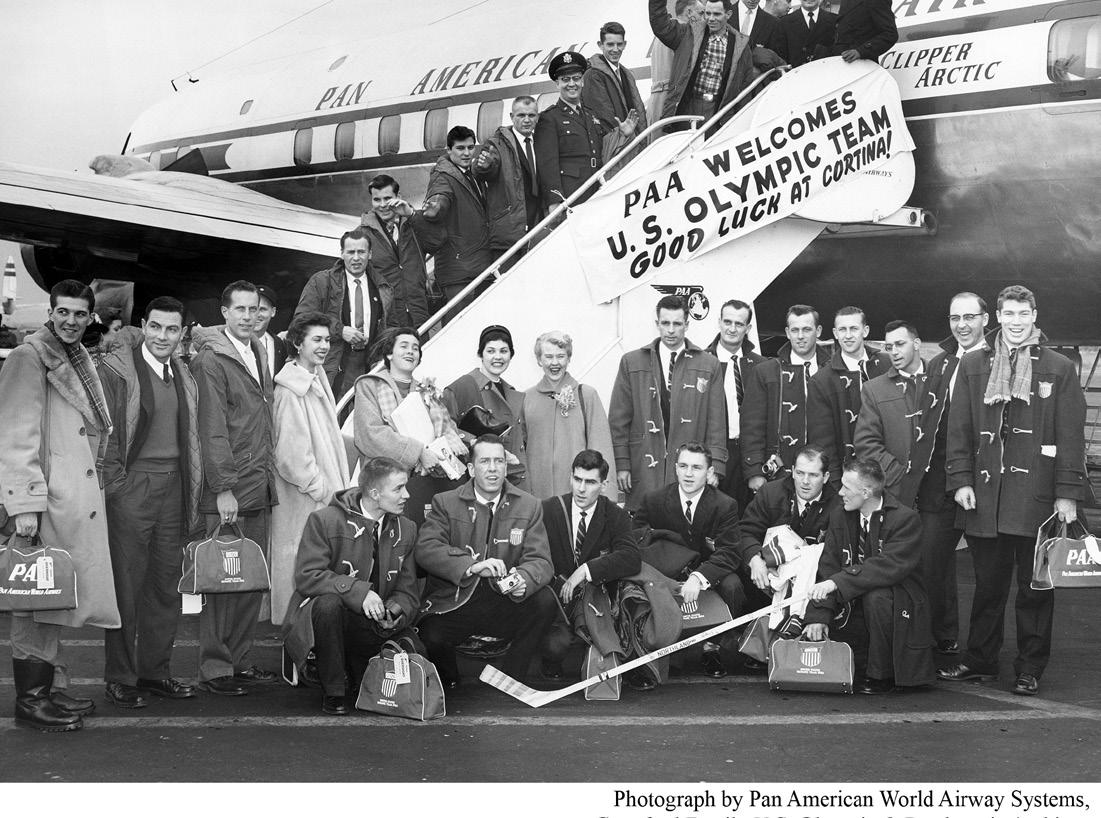
For the first time, the Olympic Winter Games were televised internationally. Venues were designed with cameras in mind, though Cortina saw no financial benefit from broadcast rights. That came later at the Olympic Winter Games Squaw Valley 1960. Corporate sponsorships also played a larger role, with Olivetti supplying typewriters for 400 journalists. Figure skating was staged outdoors for the last time, and speedskating was contested on natural ice for the final time.
There was no Olympic village. Athletes stayed in hotels, private homes and military barracks, creating an intimacy that many remembered fondly. Against this backdrop of tradition and change, Team USA produced some of its most memorable performances.
The United States sent 67 athletes to Cortina — 57 men and 10 women — and won seven medals: two golds, three silvers and two bronze. The medal count may seem modest today, but the stories behind them became part of Olympic lore.

Figure skating delivered the biggest U.S. triumph. In men’s singles, Americans swept the podium — the only time that has ever happened at the Olympic Winter Games. Hayes Alan Jenkins (above) won gold, Ronald Robertson earned silver, and David Jenkins, Hayes’ younger brother, took bronze. Four years later, David would win gold in Squaw Valley.

On the women’s side, Tenley Albright (above) authored one of the great American Olympic stories. Already a silver medalist in Oslo in 1952, she arrived in Cortina just
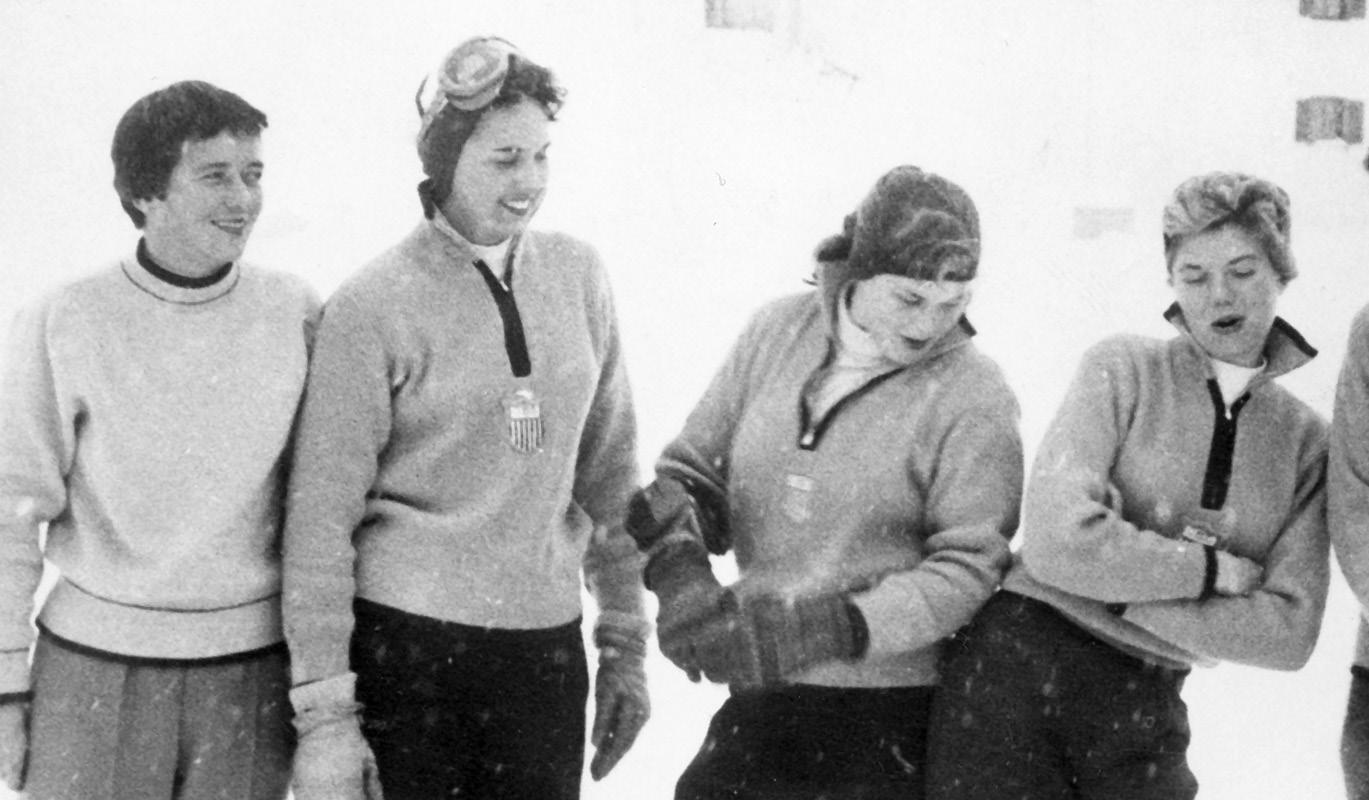
weeks removed from a severe ankle injury. Her father, a surgeon, flew to Italy to stitch her wound. Skating bandaged but undeterred, Albright delivered a flawless performance to capture gold. Teammate Carol Heiss followed with silver, a prelude to her own Olympic title in 1960.
Albright’s legacy stretched beyond the ice. She graduated from Harvard Medical School in 1961 and became a
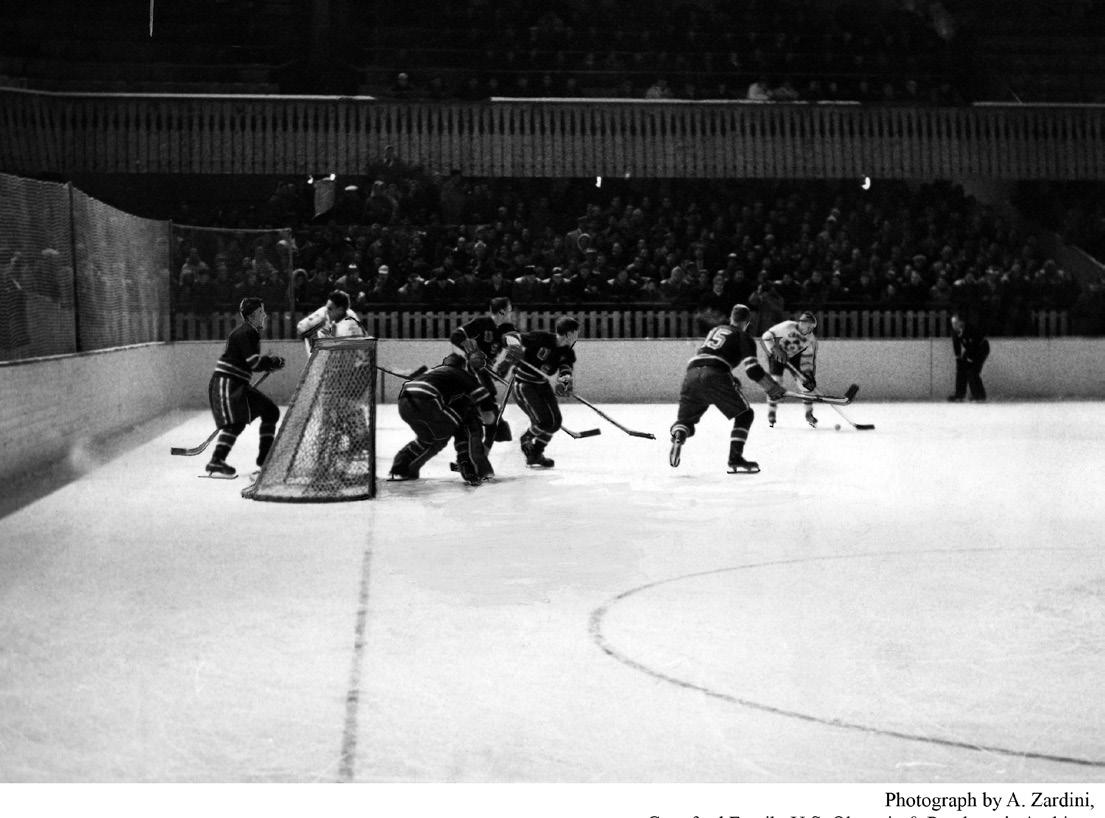
renowned surgeon. In 1980, she broke another barrier by becoming the first female officer of the then-U.S. Olympic Committee.
The U.S. men’s hockey team (left) also made history, defeating Canada for the first time in Olympic play. The Americans earned silver, losing only to the Soviet Union in that nation’s Olympic Winter Games debut. The Soviets’ 4-0 victory signaled the rise of a new powerhouse and a Cold War rivalry that reshaped the sport.
In sliding sports, Team USA’s four-man bobsled team claimed bronze. Among them was Arthur “Art” Tyler, a physicist who had already earned his doctorate before competing. His dual achievements embodied the balance of athletic and academic excellence exemplified by U.S. Olympians and Paralympians.
Beyond medals, Cortina 1956 highlighted both progress and nostalgia. Women competed in Olympic crosscountry skiing for the first time, and Italian skier Giuliana Chenal-Minuzzo became the first woman to deliver the Olympic oath. Weather created challenges, with little

snowfall forcing organizers to truck in snow for Alpine events.

Cortina’s venues and striking scenery later appeared in the James Bond film For Your Eyes Only. But the Games’ most lasting impact was their role as a bridge — preserving traditions such as natural-ice competition while pioneering the broadcast and sponsorship models that define today’s Olympic Games.
For Team USA, Cortina was a showcase of resilience and innovation. The Jenkins brothers, Tenley Albright, Carol Heiss, the hockey team and the bobsledders etched unforgettable chapters in American Olympic history. Their stories — of family triumph, comeback from injury, breakthrough victories and academic brilliance — still inspire nearly 70 years later.
As the Olympic and Paralympic community looks toward the Olympic and Paralympic Winter Games Milano Cortina 2026, the memories of 1956 remind us how far the Games have come. Cortina remains more than a mountain town. It is a symbol of the Olympic and Paralympic spirit’s power to endure, adapt and inspire across generations.




September marks National Service Dog Month, a time to recognize the extraordinary impact these highly trained animals have on the lives of people with disabilities. For me, it is also a moment of reflection and gratitude for my service dog, Nico VI. Nico is far more than a companion. He is a trusted partner who has been with me in the barn during para dressage competitions, now beside me at parafencing tournaments, and always by my side in daily life.
When I was competing in para dressage, Nico was a vital member of my team. Preparing for a competition is both physically and mentally demanding, and Nico ensured I could focus on my sport. He retrieved my horse’s lead and boots when I needed them, opened and closed gates, and even applied deep pressure to my legs when muscle spasms threatened to interrupt my ride. His steadiness and reliability allowed me to direct my energy toward my horse and my performance. In moments when I might have doubted my ability, Nico gave me confidence that I could continue to pursue my sport with safety and independence.
Today, as I train and compete in parafencing, Nico remains my constant. At tournaments, he positions himself at the edge of the strip, calmly watching over me while I fence. The commotion of a crowded venue with blaring announcements, clashing blades, and bustling spectators does not distract him from his focus. He is ready at any moment to pull my wheelchair, retrieve something I’ve dropped, or bring me my water bottle. Nico’s presence frees me to concentrate fully on my bouts, secure in the knowledge that my needs are covered.

But Nico’s impact goes far beyond the physical support he provides. With him by my side, I feel safer and more confident navigating the world. His quiet presence gives me the reassurance to venture into spaces I might have avoided before. He reminds me daily that disability doesn’t define limitations; it reshapes what’s possible when we have the right support.
National Service Dog Month is important because it highlights how service dogs provide not only practical support, but also a profound sense of freedom and dignity. Yet with this recognition comes a need for greater public awareness.
One of the most important aspects of awareness is service dog etiquette. When a dog like Nico is working, he should never be distracted. This means no petting, talking, or offering food. Even a brief interruption could prevent him from responding to a critical need. Respecting the bond between a service dog and their handler is the best way to honor the work they do.
It is equally important to understand the legal protections that make this partnership possible. Service dogs like Nico are highly trained professionals and treating them as such helps create more accessible and inclusive communities. Under the Americans with Disabilities Act (ADA), service dogs are permitted to accompany their handlers in public places, from restaurants and stores to sports arenas. Staff may only ask two questions: whether the dog is a service animal required because of a disability, and what tasks the dog is trained to perform. They cannot request documentation, inquire about the nature of a disability, or deny access. These protections
ensure that disabled people can fully participate in their communities without facing unnecessary barriers.
For me, National Service Dog Month is not only about celebrating Nico’s remarkable work but also about educating others. From the barn to the fencing strip, and everywhere in between, Nico has given me independence, confidence, and joy. By raising awareness and honoring the work of service dogs, we help create a world where every partnership like ours is respected and protected.











By Sydney Collier, PLY (Para-Equestrian, 2016)
This is my first service dog, Journey. He came into my life when I was 13, after I fell in a movie theater and broke my collarbone because I didn’t want to use a cane. I was definitely a stubborn 13-year-old—but can you really blame me? What teenager wants to be the one using a cane to get around safely?

Journey was such a special dog. Everyone was surprised he could do his job when they saw him out of his harness—he had all the energy in the world when he was off duty. But the moment his harness went on, he focused all that energy into working. He was the best mobility aid, keeping me balanced and upright instead of constantly falling. He’d pick things up when I dropped them, knew how to bark for help if I fell, and once even licked my face until I woke up after I passed out—something he was never trained to do.


He could retrieve phones and remotes, and his absolute favorite was taking things from me to my family members. He loved it, and somehow always knew exactly who to bring each item to.
Journey got to see the world with me. He even became the first service dog to ever receive accreditations at the World Equestrian Games. In 2014, when I represented the USA in Aachen. He was truly the star of the games and received his very own Against all Odds award in the FEI awards in 2014!
After Journey unexpectedly passed away in 2019, another incredible white poodle came into my life. His name is Logan, and he turned out to be the perfect dog to follow in Journey’s footsteps. He joined me when he was three years old and has been my loyal companion ever since. I truly believe Journey had a hand in sending Logan my way.

It’s amazing how different their personalities are. Logan is the definition of chill and even-tempered. Even when his harness is off for the day, he would much rather lounge on the couch than play with toys. His favorite tasks are recycling water bottles and helping me pick things up when I drop them.
Their differences extend to how they relate to my horses, too. Journey absolutely adored them—he even had a romance with my horse Wentworth, where he’d lick Wentworth’s nostrils while Wentworth nuzzled him all over. Logan, on the other hand, prefers to observe from a respectful distance. Every now and then he’ll allow my horse Bell Bottoms (a.k.a. Beebs) to nuzzle his behind, but he’s always had a deep respect for the horses and the way they work with him to keep me safe.
Logan is now nine years old and nearing retirement age. Earlier this year, in January, I was lucky enough to welcome a standard poodle puppy into our lives with the hope that he will follow in Logan and Journey’s footsteps as my loyal service dog. I’m very happy to share that his training is going smoothly—he’s already proving to be a confident and joyful new member of the pack.
His name is Charlie, and his training is already going fantastically. Just last week he went to Home Depot and Target for the first time, and he absolutely loves going to the barn to watch all of the horses training in the covered arena!
One theme that connects all three of these amazing dogs is their incredible intuition. We share an unspoken language, and without fail, they guide me to safety no matter where in the world we are.
I’m so excited to continue building a bond with Charlie as he matures and grows into the service dog we’re all hopeful he will become! I will never have enough words to thank the three of them enough for being happy to help me no matter the situation!
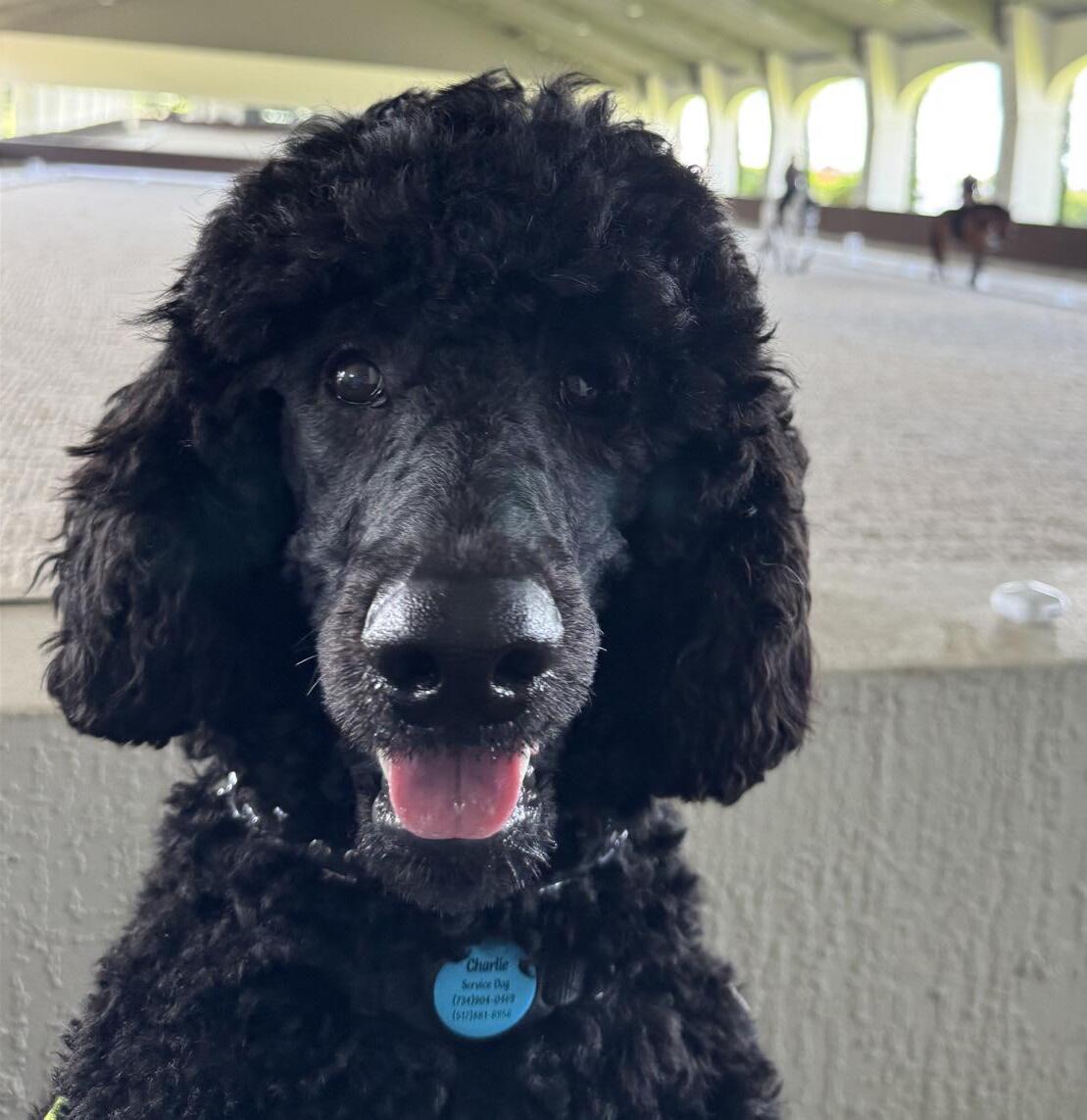


Check out Making Team USA for realtime qualification of Milano-Cortina team members!
Things are ramping up fast on the road to the MilanoCortina 2026 Olympic and Paralympic Games, and you can keep up with who will wear the red, white, and blue on the slopes and ice in Italy in a few short months. Head to the Making Team USA landing page for all the latest info!

Milano-Cortina Fandom –Are you going to the Games?
Milano-Cortina 2026 promises to be a spectacular, but widespread, Games. There will be no Team USA House in Italy, but some NGBs are planning neat alumni events! We’ve heard from some of you who are planning to attend and want to connect you to the opportunities that we know about if you’re going to be on the ground and in the stands!
Please fill out this survey if you’re planning to attend the Winter Olympic or Paralympic Games in 2026, like many of your peers who have done so already. More to come on engagement opportunities stateside during MilanoCortina as well.
As always, if you have thoughts, feedback, requests, or just want to chat, we’re here for you.
Email usopa.mailbox@usopc.org.
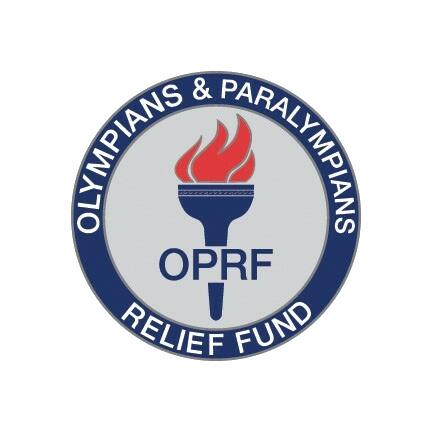
The U.S. Olympians & Paralympians Relief Fund (OPRF) provides support to U.S. Olympians and Paralympians who are recovering from natural disasters and other hardships.
To offer financial assistance and solidarity to U.S. Olympians and Paralympians facing difficulties or hardships (such as personal loss, injury, accident, illness, or natural disaster) in the past twelve months.
To raise funds, guide USOPA members through the application process, and provide OPRF Financial Assistance Grants to eligible members meeting the qualifying guidelines.
For information on how to apply for a grant, visit OPR.fund.
Please contribute if you can. Here are ways to give:
- Visit OPR.fund
- Click the DONATE button and give through PayPal
- Write a check and mail it to the address below.
- Arrange for a disbursement from your donor-advised fund (DAF) or family foundation.
- Make a distribution from your IRA or another retirement account.






“ONCE

